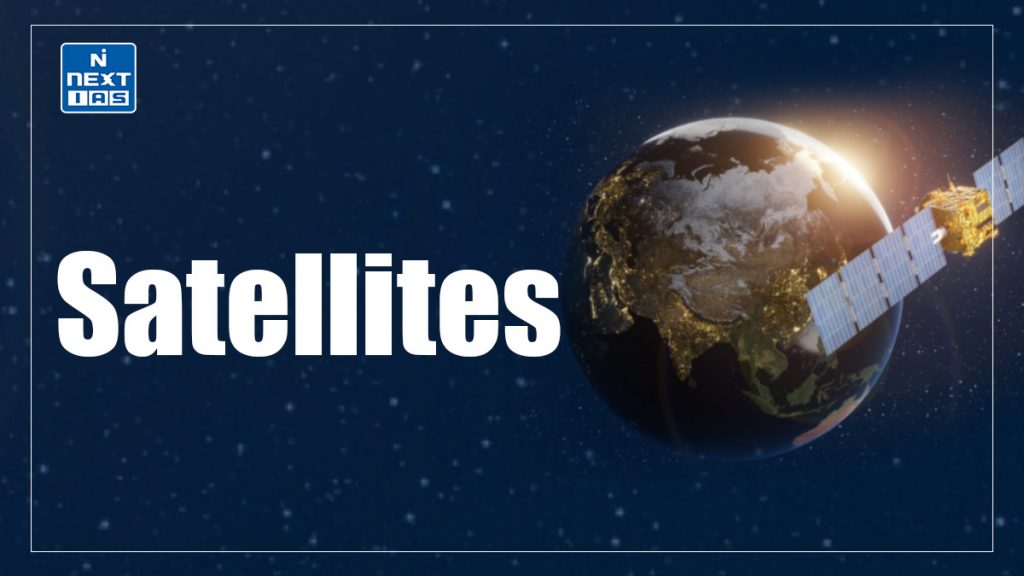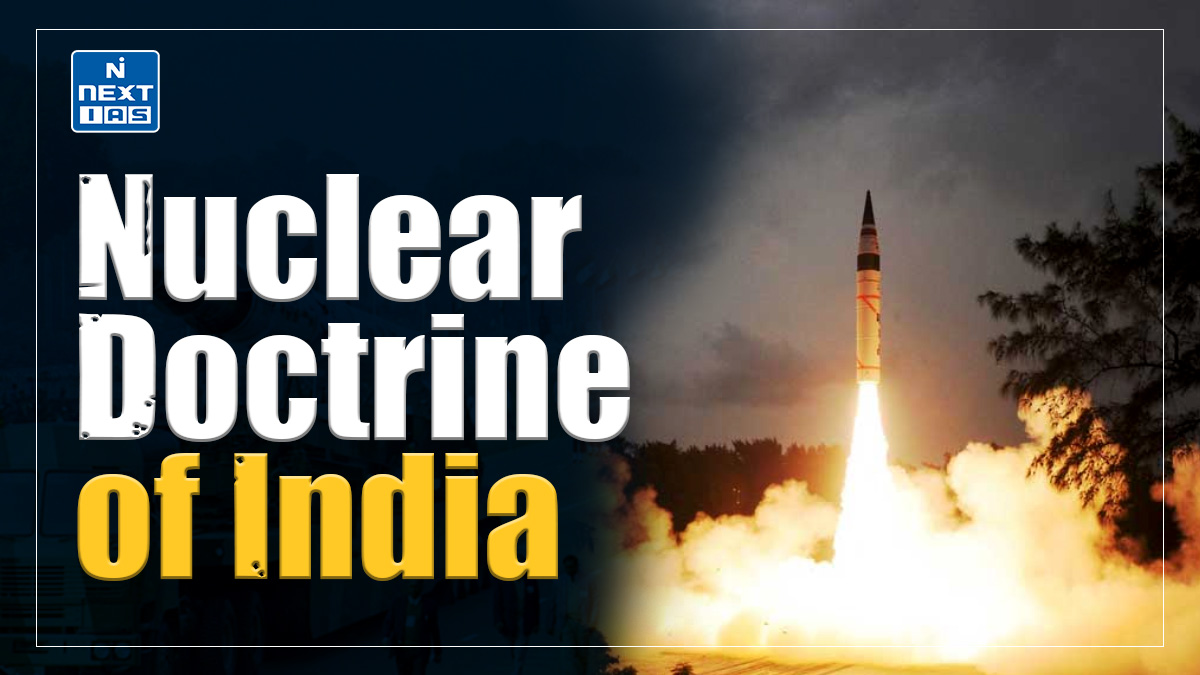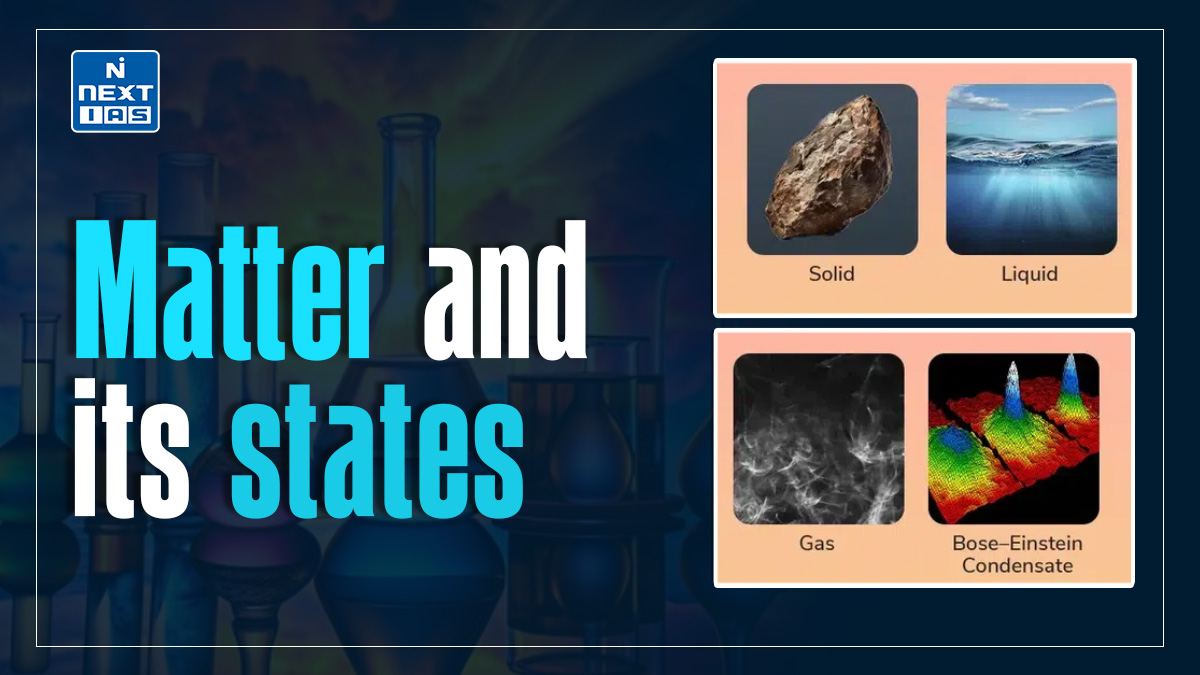
Satellites are human-made objects launched into space to orbit Earth or other celestial bodies. They serve various purposes, including communication, navigation, weather forecasting, Earth observation, and scientific research. They play a crucial role in modern life, enabling global connectivity, accurate GPS services, and environmental monitoring.
What are Satellites?
- A satellite is any object that orbits a planet or star. Satellites can be both natural and man-made. For example, Earth is a natural satellite of the sun. Likewise, the moon is a natural satellite of Earth.
- In space Science, the word “satellite” generally refers to a man-made machine that is launched into space and moves around Earth or any other celestial body like Moon or Mars.
- There are thousands of artificial, or man-made, satellites orbiting Earth. Sputnik 1 was the first satellite in space. The Soviet Union launched it in 1957.
Size of Satellites
The mass based classification of satellites are given below:
- Large satellites: >1000 kg
- Medium satellites: 500 to 1000 kg
- Small satellites: < 500 kg
- Minisatellites: 100 to 500 kg
- Microsatellites: 10 to 100 kg
- Nanosatellites: 1 to 10 kg
- Picosatellites: 100 g – 1 kg
- Femtosatellites: 10 g – 100 g
- Attosatellites: 1 g – 10 g
- Zeptosatellites: 0.1 g – 1 g
- CubeSat sizes:
- From ~0.2 kg to ~40 kg
- From 0.25U to 27U (1U CubeSat is 10×10×10 cm)
| ISRO NANO SATELLITE ISRO Nano Satellites (INS) is a versatile system envisioned for future science and experimental payloads. With a capability to carry up to 3 kg of payload and a total satellite mass of 11 kg, it offers immense opportunities for future use. The INS system is developed as a co-passenger satellite to accompany bigger satellites on PSLV launch vehicle. Its primary objectives include providing a standard satellite bus for launch on demand services and providing opportunity to carry innovative payloads. The primary objectives of INS system are to: – Design and develop a low cost modular Nano satellite. – Provide an opportunity for ISRO technology demonstration payloads. – Provide a standard bus for launch on demand services. – Provide an opportunity to carry innovative payloads for Universities / R&D laboratories. |
Types of Satellite
- It can be classified by their function since they are launched into space to do a specific job.
- Generally, there are three different types of satellites i.e. Communications Satellite, Remote Sensing Satellite, and Navigation Satellite.
Communication Satellite
- Communication satellites are artificial satellites that relay and amplify radio telecommunication signals via a transponder. It creates a communication channel between a source transmitter and a receiver at different locations on Earth.
- Communications satellites are used for television, telephone, radio, internet, and military applications. Most communications satellites are in geostationary orbit about 35,900 km above the equator, so that the satellite appears stationary at the same point in the sky. Therefore the satellite dish antennas of ground stations can be aimed permanently at one spot.
Remote Sensing Satellite / Earth Observatory Satellite
- It is the one which observes or senses objects or phenomena on Earth. With the help of different payloads like camera, transponders, lasers they acquire information about the Earth and other planets.
- It is used in numerous fields, including geography, land surveying, Earth science disciplines (for example, hydrology, ecology, meteorology, oceanography, glaciology, geology), military, intelligence, commercial, economic, planning, and humanitarian applications, among others.
Navigation Satellite
- It is an artificial satellite that, together with other satellites, provide autonomous geo-spatial positioning. It allows electronic receivers to determine their location (longitude, latitude, and altitude/elevation) to high precision using time signals transmitted from it.
- The system can be used for providing position, navigation or tracking something fitted with a receiver (satellite tracking). The group of satellites also calculate the current local time to high precision.
Uses of Satellites
- Communication
- Enable TV broadcasts, internet services, and mobile networks.
- Facilitate global video conferencing and telemedicine.
- Navigation
- GPS, Galileo, and GLONASS provide precise location tracking.
- Used in aviation, maritime operations, and personal navigation.
- Weather Forecasting
- Monitor storms, climate patterns, and natural disasters.
- Provide early warnings for cyclones, floods, and droughts.
- Earth Observation
- Track deforestation, crop health, and urban development.
- Monitor environmental changes and natural resources.
- Scientific Research
- Study space phenomena like solar winds and cosmic radiation.
- Conduct experiments on the International Space Station (ISS).
- Defense and Security
- Support military communication and reconnaissance.
- Monitor border areas and track missile activities.
- Environmental Monitoring
- Track pollution, ocean currents, and glacier movements.
- Assist in disaster management and relief operations.
They impact daily life by enabling communication, navigation, environmental tracking, and scientific advancements.
Harmful Effects of Satellites
- Space Debris
- Decommissioned satellites contribute to space junk, posing collision risks to operational spacecraft.
- Increases the likelihood of chain-reaction collisions (Kessler Syndrome).
- Environmental Impact
- Rocket launches release greenhouse gases and harmful pollutants into the atmosphere.
- Debris re-entering Earth’s atmosphere can create toxic byproducts.
- Radio Signal Interference
- Overcrowding of satellites in orbits can cause signal interference, disrupting communication and GPS services.
Read our detailed article on Orbits and Space Debris.
- Light Pollution
- Reflective satellites, especially large constellations, can obstruct astronomical observations.
- Health Concerns
- Continuous exposure to electromagnetic radiation from satellite signals raises concerns about long-term health effects.
- Security Threats
- They used for surveillance may raise privacy issues and lead to geopolitical tensions.
- Space Resource Consumption
- Frequent satellite launches consume significant resources, contributing to space commercialization and environmental degradation.
While it provide essential services, they also create challenges that require responsible management and mitigation efforts.
Way Forward
- The future of satellites lies in sustainable practices and innovation. Managing space debris through deorbiting plans, satellite recycling, and reusable rockets is essential.
- Miniaturized satellites like CubeSats can reduce costs and environmental impact, while AI enhances satellite management. Strong international regulations and global collaboration are crucial to prevent overcrowding and address climate challenges.
- Green technologies, including eco-friendly fuels and low-emission rockets, minimize environmental harm. Real-time space traffic monitoring ensures collision-free operations. Privacy laws must evolve with surveillance technologies to balance innovation with ethics. Adopting these measures will ensure satellite systems benefit humanity while mitigating risks to space and Earth.
Conclusion
Satellites play a vital role in communication, navigation, Earth observation, and scientific research. However, sustainable operations, effective regulation, and technological innovation are essential to minimize environmental impact, manage space debris, and balance innovation with privacy. With responsible practices, satellites can continue driving progress while safeguarding space and Earth environments.
GS - 3





